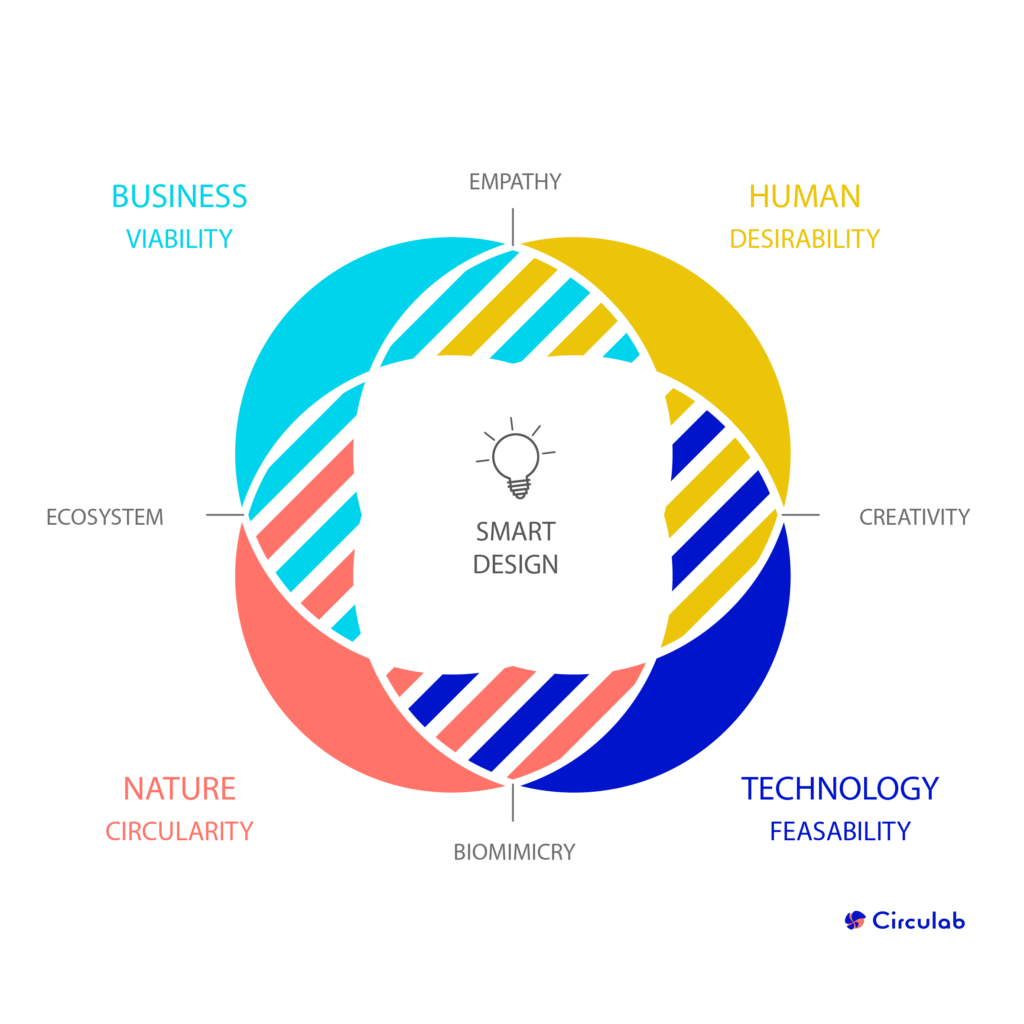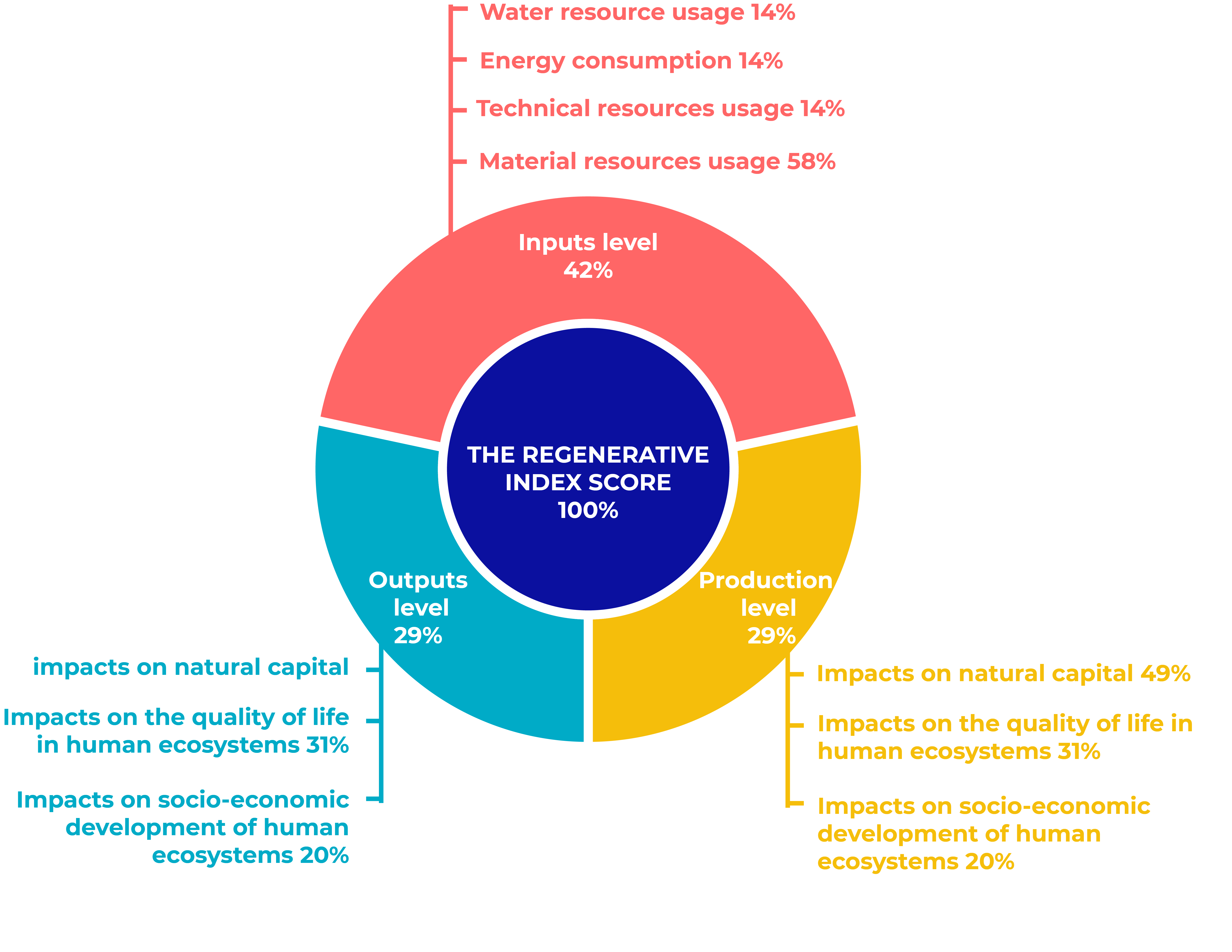OUR METHODOLOGY
The Circulab method
Our circular design method has helped thousands of change makers worldwide. With an entertaining and federating approach, understand systems thinking and redesign a system step by step. Creativity, collective intelligence and learning from nature are the keys to success!

The regenerative aspects we test for
Living ecosystems
This refers to all the impacts a business model has on living ecosystems, including water, soil, air, and biodiversity. It is the heaviest element of the Index in terms of weight.
Human ecosystems
This refers to the impacts of a business model on society, especially referring to the local communities in proximity to the place of activity of said business, but also to the working and living conditions of the organization's employees.
The 3 parts of the RegenIndex
As mentioned before, our method is deeply rooted in systems thinking - a critical approach that requires the analysis of impacts not as separate entities, but as interconnected elements contained by systems.
Due to this systems thinking approach, the RegenIndex is built with a material-flow perspective in mind, since those are both the connexions between elements, and the result of various interaction processes.
This is how we came up with the structure of inputs-production-outputs, in other words testing for the material flows coming into the business, the ones processed at the organization level, and the ones going out. As such, the 3 different scopes of impact are being taken into account.
The weights and calculation of scores
The calculation of the final round-up and individual scores is done by associating a number of points to each answer option of each question, which are then added up and presented on a scale of 0 to 100. The weights of each part and subpart of the Index are presented in the schemes below.

The weights of individual parts
